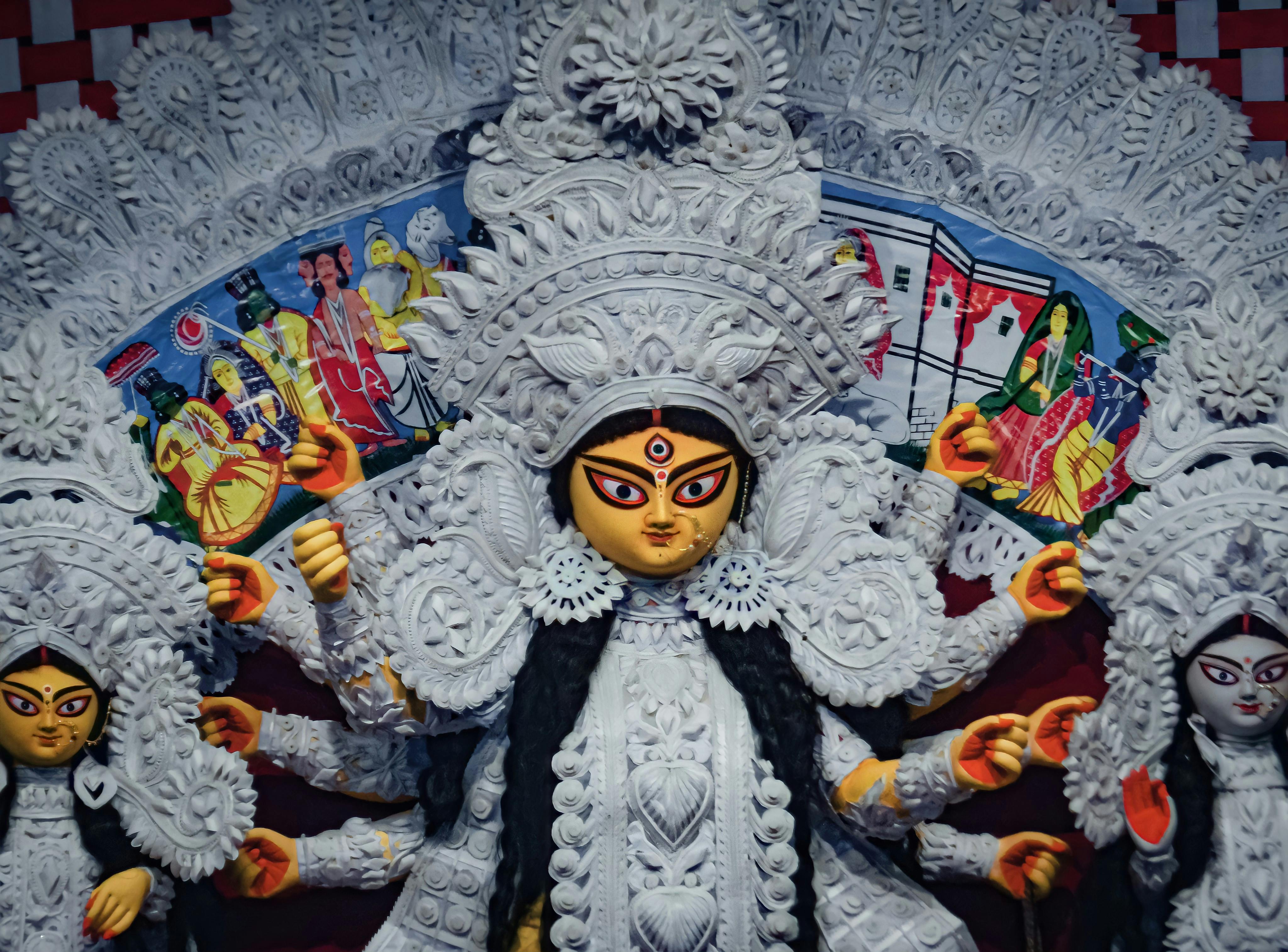Navratri:The Nine Sacred Days 🌺
The festival of Navratri is celebrated with prayers and gaiety at the beginning of Ashwin (autumn) or Chaitra (spring). This is a time of introspection and going back to our source. During this period of change, nature also sheds the old and becomes new; Animals go into hibernation and life blossoms again in the spring season. According to Vedic science, matter returns to its original form and creates itself again. This creation is not moving in a straight line but it is cyclical, everything is being renewed by nature – it is a continuous process of rejuvenation. The festival of Navratri is to take your mind back to its source.
Through prayer, silence, fasting and meditation the seeker journeys towards his true source. Night is also called night because it also brings newness and freshness. She provides relief at three levels of our existence – the gross body, the subtle body, and the causal body. Through fasting the body becomes free from toxins, through silence our words become pure and the talkative mind is calmed, and through meditation we attain self-realization by plunging into the depths of our being.
This inner journey eliminates our bad karmas. Navratri is the festival of life through which only Mahishasura (i.e. inertia), Shumbh-Nishumbh (ego and shyness) and Madhu-Kaitabh (excessive passion and hatred) can be destroyed. They are complete opposites to each other, yet complement each other. Inertia, deep negativity and obsessions (Raktabijasura), meaningless disputes (Chanda-Munda) and blurred vision (Dhumralochana) can be overcome only by raising the level of Prana energy.
The nine days of Navratri are also an opportunity to rejoice in this universe made of three fundamental qualities. Although our life is governed by these three qualities, we rarely recognize them or think about them. The first three days of Navratri are for Tamoguna, the second three days are for Rajoguna and the last three days are for Sattva. Our consciousness flows between these Tamogun and Rajogun and blossoms in the last three days of Satvagun. Whenever Satva increases in life, we get victory. The essence of this knowledge is celebrated as Vijayadashmi on the tenth day.
These three fundamental qualities are considered the feminine power of our grand universe. By worshiping Mother Goddess during Navratri, we bring harmony in the three Gunas and increase the level of Sattva in the environment. Although Navratri is celebrated as the victory of good over evil, but in reality this battle is not between good and evil. From the point of view of Vedanta, this is the victory of Advaita over Dvaita. As Ashtavakra had said – The wave tries hard to keep its identity separate from the sea, but to no avail.
Although the micro world is contained within this gross world, the feeling of separation between them is the cause of conflict. For a knowledgeable person the entire universe is alive. Just as children find everything alive, similarly he also sees life in everything. Mother Goddess or pure consciousness is present in every name and form. To know the same Divinity in every name and every form is the celebration of Navratri. During the last three days, all aspects of life and nature are honored with special pujas.
Kali Maa is the most terrifying manifestation of nature. Nature is a symbol of beauty, yet it also has a terrifying side. By accepting this dual reality, an acceptance comes in the mind and the mind gets rest.
The Mother Goddess is known not only as Wisdom, but also as Illusion; She is not only Lakshmi (prosperity), she is also hunger (appetite) and thirst (trishna). Recognizing this dual aspect of the Mother Goddess in the entire creation, one goes into a deep samadhi. It is also an answer to the centuries-old religious conflict in the West. Advaita Siddhi can be achieved through knowledge, devotion and selfless action or a state of perfection can be achieved in this Advaita consciousness.




Good one.. Must try to relate Durgapuja to Maithili culture...
ReplyDelete